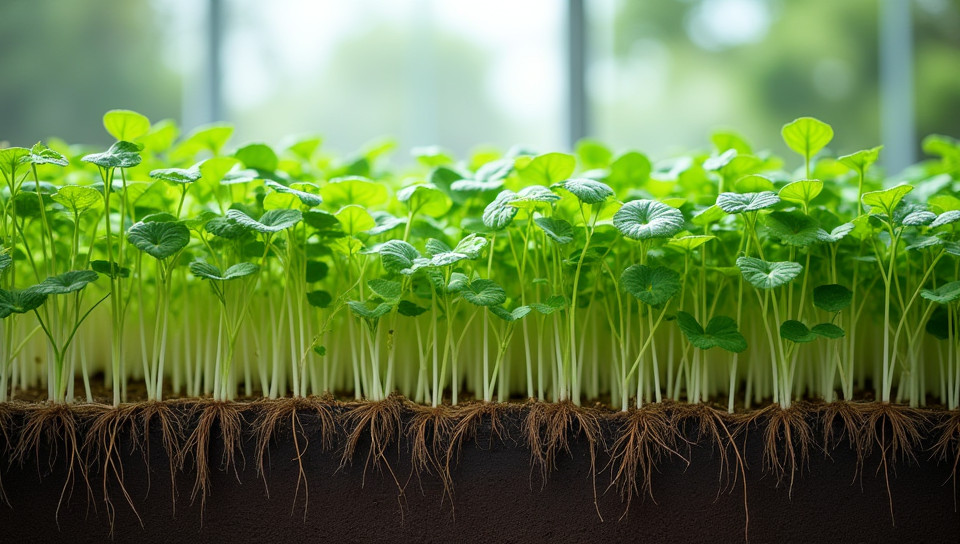Root system usage differs between aeroponics and hydroponics 36%

Unlocking the Secrets of Root System Usage: A Comparative Analysis of Aeroponics and Hydroponics
As we delve into the world of soilless cultivation, it's essential to understand the nuances that set different hydroponic systems apart. Two popular methods that have gained significant attention in recent years are aeroponics and hydroponics. While both techniques provide a soil-free environment for plant growth, their root system usage differs significantly, impacting overall efficiency, crop quality, and water consumption. In this article, we'll explore the unique characteristics of each method and examine how they affect root system development.
Understanding Aeroponics
Aeroponics is a type of hydroponic system that uses a fine mist to deliver nutrients directly to the roots of plants. This method involves suspending the roots in the air, allowing for optimal oxygenation and minimizing water consumption. The lack of soil and excess moisture creates an ideal environment for root growth, promoting healthy development and increasing yields.
Root System Usage in Aeroponics
In aeroponic systems, the root system is designed to thrive in a low-water environment. Plants develop a more extensive network of fine roots, which are better equipped to absorb nutrients from the mist. This unique adaptation enables plants to grow faster and healthier, resulting in higher yields.
Understanding Hydroponics
Hydroponics, on the other hand, involves growing plants in a nutrient-rich solution rather than soil. This method allows for precise control over the delivery of essential elements, promoting healthy root growth and development. However, hydroponic systems often require more water compared to aeroponic systems, which can lead to increased energy consumption and higher operating costs.
Root System Usage in Hydroponics
In hydroponic systems, the root system is designed to thrive in a moist environment. Plants develop a more robust network of roots, which are better equipped to absorb nutrients from the solution. However, this can lead to an over-reliance on water, resulting in reduced yields and increased susceptibility to disease.
Key Differences Between Aeroponics and Hydroponics
- Both methods promote healthy root growth and development
- Aeroponic systems use significantly less water compared to hydroponic systems
- Hydroponic systems often require more precise control over nutrient delivery
- Aeroponic systems are better suited for crops that prefer well-draining soil
- Hydroponic systems can be used for a wide range of crops, including those that prefer wet conditions
Conclusion
The root system usage differs significantly between aeroponics and hydroponics, reflecting the unique characteristics of each method. Aeroponic systems promote healthy root growth in a low-water environment, while hydroponic systems require more water and precise control over nutrient delivery. By understanding these differences, growers can optimize their cultivation techniques, reduce costs, and increase yields. As we continue to push the boundaries of soilless cultivation, it's essential to acknowledge the importance of root system usage in aeroponics and hydroponics, ensuring a brighter future for sustainable agriculture.
- Created by: Susan Gutierrez
- Created at: Feb. 1, 2025, 2:25 p.m.
- ID: 19856

